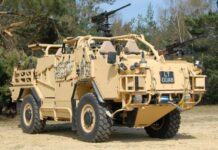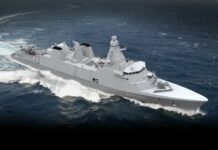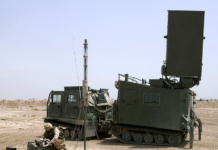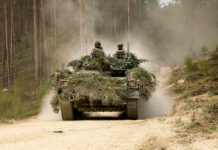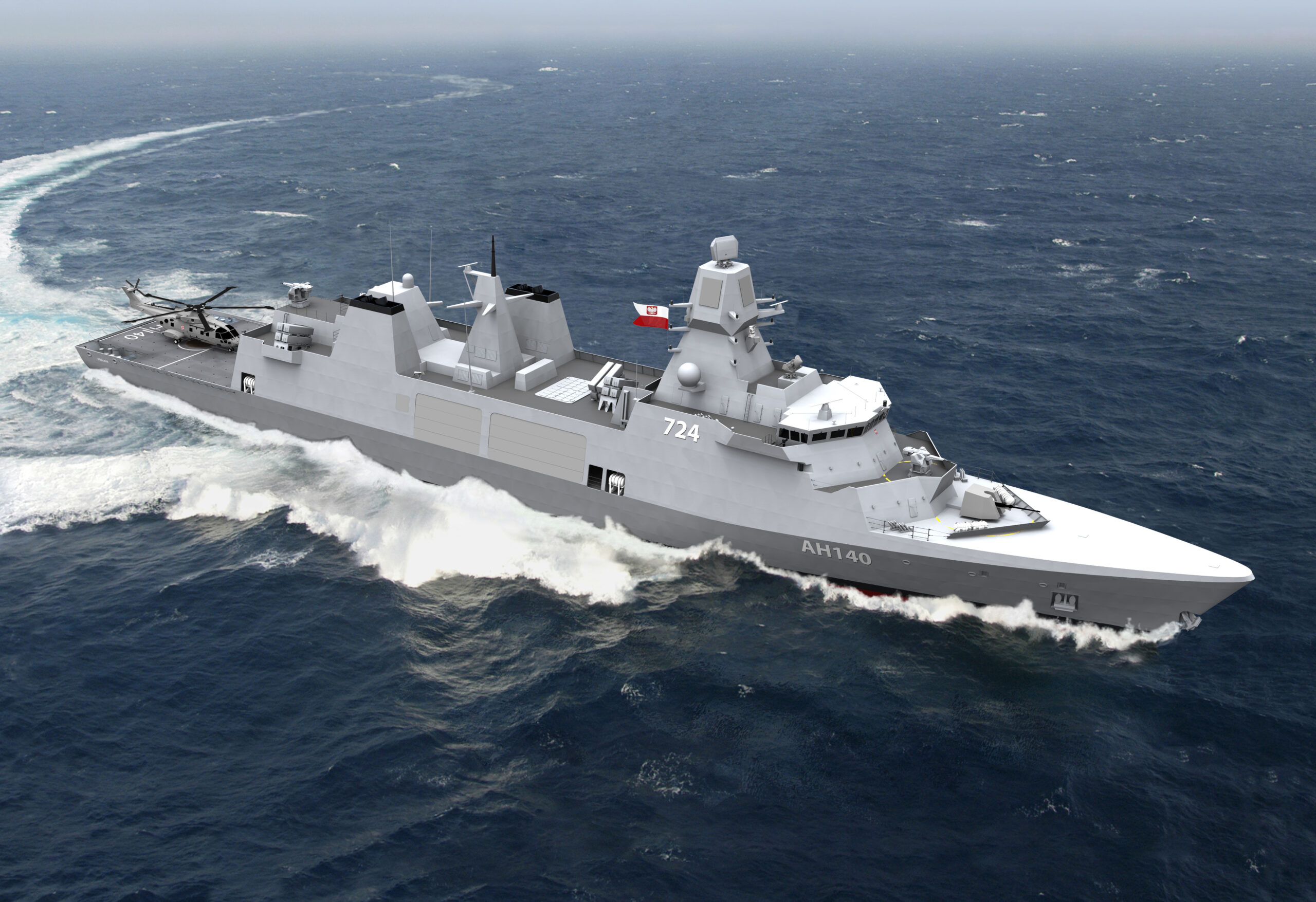
Type 31/Arrowhead 140 Frigate Programmes: Status Report
Conrad Waters
Four years ago, at the time of DSEI 2019, Babcock International announced that its ‘Arrowhead 140’ design proposal had been selected as the preferred bid for the United Kingdom’s Type 31 frigate programme. Since then, production of the new class has commenced at a new building hall at Babcock’s Rosyth facility, from where the first ship of the class will be launched in the months ahead. Arrowhead 140 has also achieved early export success, with both Indonesia and Poland selecting the design for indigenous frigate construction. This article provides a status report on the progress that has been achieved with both the British and export contracts.
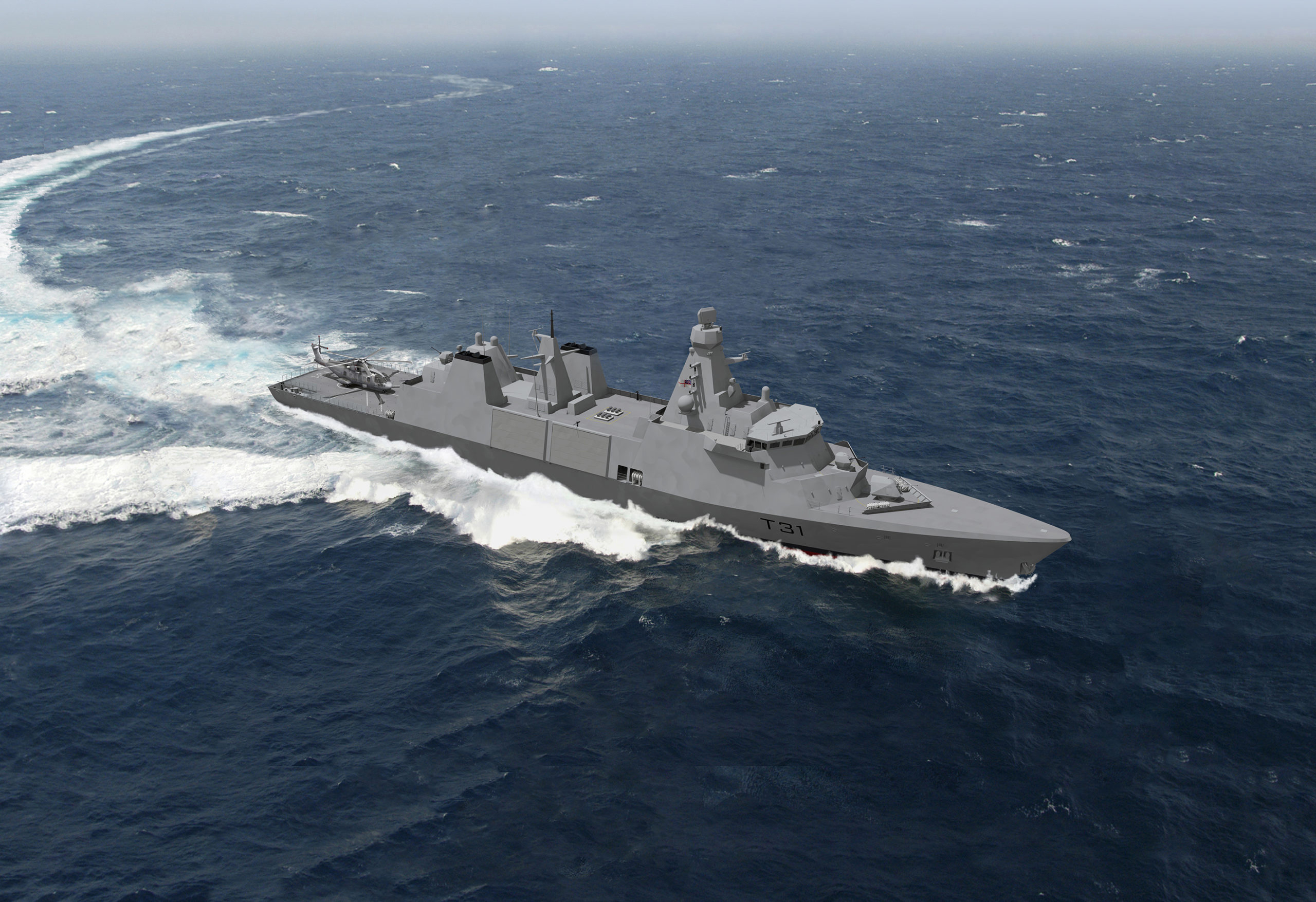
Project Origins
Arrowhead 140 traces its origins to a requirement to replace the ageing Type 23 frigates that currently form the core of the British Royal Navy’s (RN’s) surface fleet. The United Kingdom’s 2015 Strategic Defence & Security Review determined that previous plans to replace all 13 ships of this design that were then in RN service with a single class of Type 26 frigate, also known as the Global Combat Ship, would be revised. Eight of the highly sophisticated and costly Type 26s would still be built to meet the requirements of ‘high end’ anti-submarine tasking. However, a new class of five less expensive, general purpose light frigates would also be acquired to maintain fleet numbers. These new light frigates quickly received the Type 31 designation.
The programme to acquire the Type 31 was formally launched on 7 September 2017. The project was heavily influenced by the conclusions of a new British National Shipbuilding Strategy (NSS), which had been published the previous day. The NSS aimed to revitalise Britain’s naval sector through, amongst other measures, a more cohesive approach to warship procurement and an increased focus on exports. The Type 31 acquisition was viewed as a priority programme within the NSS and the inter-related factors of affordability and exportability were to be an emphasis of its core design.
It was intended to be an adaptable, modular frigate focused on less intensive maritime security roles, thereby releasing the RN’s complex warships for ‘high end tasks’. The focus on affordability was reflected in an average target cost of just GBP 250 M (EUR 290M) per unit for the five frigates, which were to be delivered from 2023 onwards. Yards would also be required to agree a fixed-price contract to build the ships. Whilst both a UK-owned design and a British build strategy were mandatory features of the programme, the involvement of international suppliers willing to meet these requirements was encouraged.
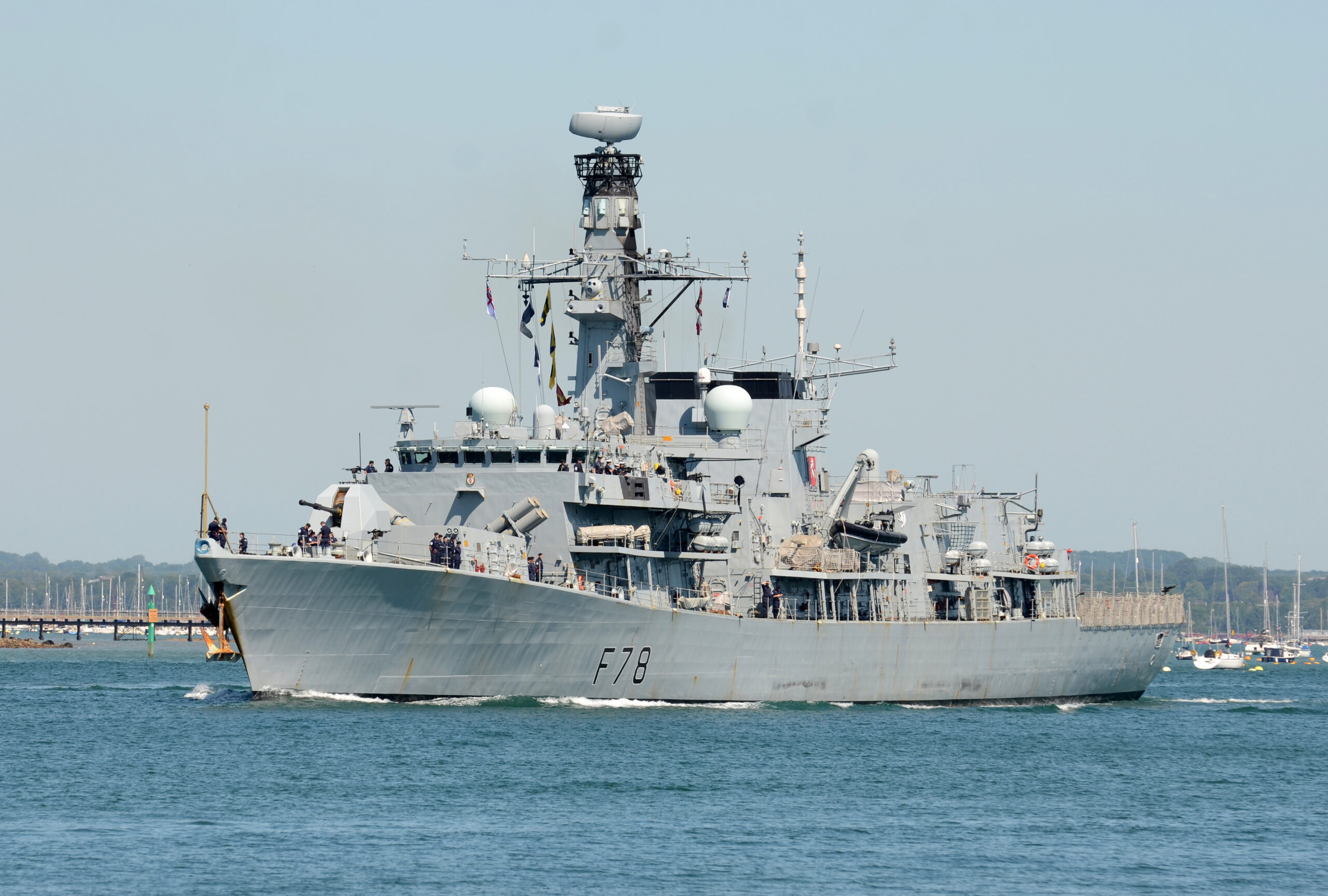
Although initial interest in the Type 31 programme was encouraging, the demanding programme requirements soon reduced the number of potential participants. It also became clear during discussions with industry that there was reluctance to accept the level of risk associated with the programme given the challenges involved. This even resulted in the temporary suspension of the programme during mid-2018 whilst the way forward was evaluated.
Finally, in December 2018, three groups were each awarded GBP 5 M (EUR 6 M) contracts to refine their design proposals. One of these was the Babcock-led Team 31, which also included Thales as a principal partner. The other finalists were consortia comprising BAE Systems and Cammell Laird, as well as Atlas Elektronik UK and thyssenkrupp Marine Systems. On 12 September 2019, it was announced that Babcock Team 31’s Arrowhead 140 design had been chosen as the preferred bid to meet the programme requirement.
As a brief note on nomenclature, the Type 31 programme was initially designated Type 31e; the ‘e’ referring to export. Subsequently, the designation Type 31 has been used for the RN variant of the Arrowhead 140 design, with the Arrowhead 140 terminology being used for export campaigns. The national Indonesian and Polish frigates both use Arrowhead 140 as their baseline.
Type 31 Design Description
The Arrowhead 140 design developed by Babcock as the basis for its Type 31 bid was derived from the Danish Absalon and Iver Huitfeldt class series of frigates built for Denmark in the early 2000s. They are directly based on the latter class’s hull. Odense Maritime Technology (OMT), designers of the original ships, provided important technical assistance as part of Babcock Team 31.
In particular, their expertise in adopting commercial practices to warship construction provided invaluable in meeting the affordability required in the new ships. Although the ships have not adopted the well-known Danish containerised ‘StanFlex’ system, OMT’s heritage of involvement in modular designs was also a major factor in achieving the adaptability that was aimed for in the Type 31. British maritime and defence consultancy BMT also provided significant input into the Team 31 design effort.

With a length of 138.7 m, a maximum beam of 19.8 m and a displacement of around 6,000 tonnes, Arrowhead 140 is a larger vessel than the Type 31’s original ‘light’ frigate designation would imply. This approach helps to ease ongoing maintenance and provides greater scope for through-life upgrades. Importantly, it also provides considerable flexibility with respect to meeting the varying equipment requirements of export customers.
The design is sufficiently large to be equipped with a flight deck that can support a heavy helicopter and the hangar can house a rotorcraft of Leonardo AW101 Merlin size. Another nod to affordability is the use of a cost-effective and efficient combined diesel and diesel (CODAD) propulsion arrangement using four Rolls-Royce MTU 20V 8000 M71 engines. Given that the RN ships are not primarily intended for the anti-submarine warfare role, the noise penalties associated with this arrangement can be accepted.
The ‘digital heart’ of the Type 31 Arrowhead 140 variant is provided by Thales’ well-established ‘Tacticos’ combat management system (CMS). Its selection represented an important break-through into the UK CMS market, which had previously been dominated by BAE Systems. Thales is also responsible for the supply of other important electronic equipment used in the Type 31. This includes the class’s integrated communications system and NS110 surveillance radar. Actual weaponry is reflective of the new ships’ proposed maritime security role. In addition to the MBDA Sea Ceptor surface-to-air missile system, each frigate will be equipped with one 57 mm BAE Systems/Bofors 57 Mk3 (US Navy Mk 110) and two 40 mm BAE Systems/Bofors 40 Mk 4 naval guns.
UK Progress
The selection of Babcock Team 31 as preferred bidder for the Type 31 programme was followed by the award of a formal construction contract on 15 November 2019. Announcement of the agreement confirmed that the average production cost of GBP 250 M per ship targeted at the time of programme launch had been achieved. However, it seems that this ambition was only met by excluding additional expense in areas such as government furnished equipment from the headline figure. By this stage, initial hopes that the first ship in the class would be delivered by 2023 had also been adjusted.
Instead, the aim was to have the lead frigate launched by 2023, with manufacturing of all five ships completed by 2027/2028. It was also intended that May 2027 would see the first Type 31 complete crew training and validation to enter full operational service.
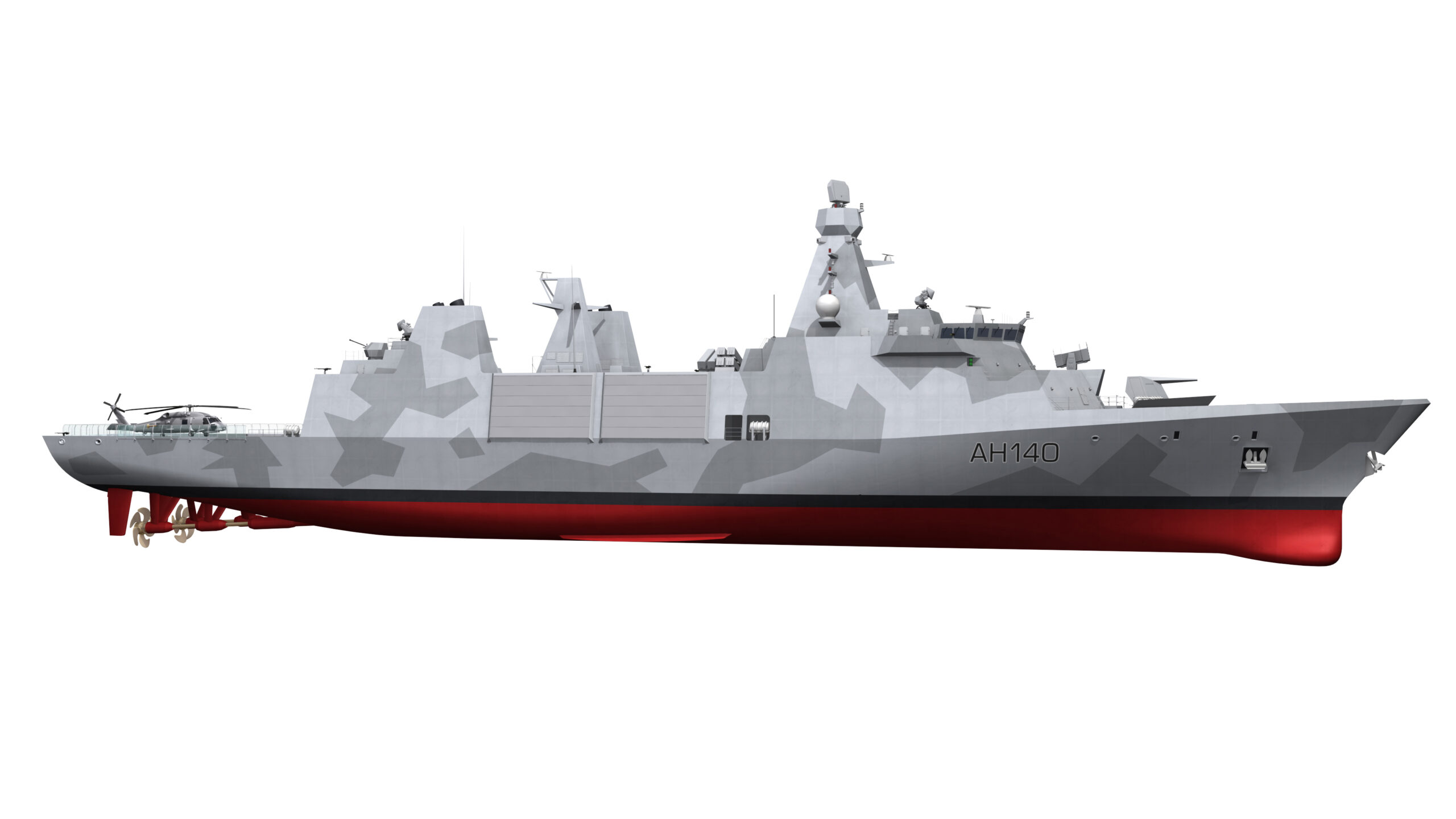
Despite these revisions, implementation of the Type 31 programme has subsequently proceeded at pace. A key element of Babcock’s plan for delivering the new frigates is their assembly in a new covered construction hall at their site in Rosyth, near Edinburgh. Named the ‘Venturer Building’, this assembly hall provides a state-of-the-art ship building and integration facility utilising the latest manufacturing and information management processes.
Measuring 147×62×42 m, it is equipped with two, 125 tonne gantry cranes and can support the simultaneous assembly of two frigates. Babcock believes that the assembly hall will benefit not only Type 31 delivery but also participation in subsequent British and international shipbuilding projects. Ground-breaking for the facility took place in April 2020 and it was completed in November the following year. By that time, work on the lead frigate, the future HMS Venturer, was already underway following an official first steel cutting ceremony by then British Defence Secretary Ben Wallace on 23 September 2021.
The five ships of the class – Venturer, Active, Bulldog, Campbeltown and Formidable – will collectively be known as the ‘Inspiration’ class under a decision announced in May 2021.
The start of construction of HMS Venturer has been followed by the successful achievement of a number of other project milestones. The keel-laying ceremony for the lead frigate was held on 26 April 2022 and was followed by first steel cutting for the second Type 31, HMS Active, in January 2023.
Subsequently, in July 2023, the British Ministry of Defence (MoD) reported that the initial crew members had been assigned to the first-of-class to help prepare for launch and subsequent delivery. At this stage, it was stated that, “Venturer is due to emerge from the construction hall at Babcock’s Rosyth facility within a year”. As of mid-2023, the official keel-laying of HMS Active was also imminent, thereby marking the start of simultaneous multi-ship assembly. All-in-all, the programme currently remains on track to meet a demanding production plan.
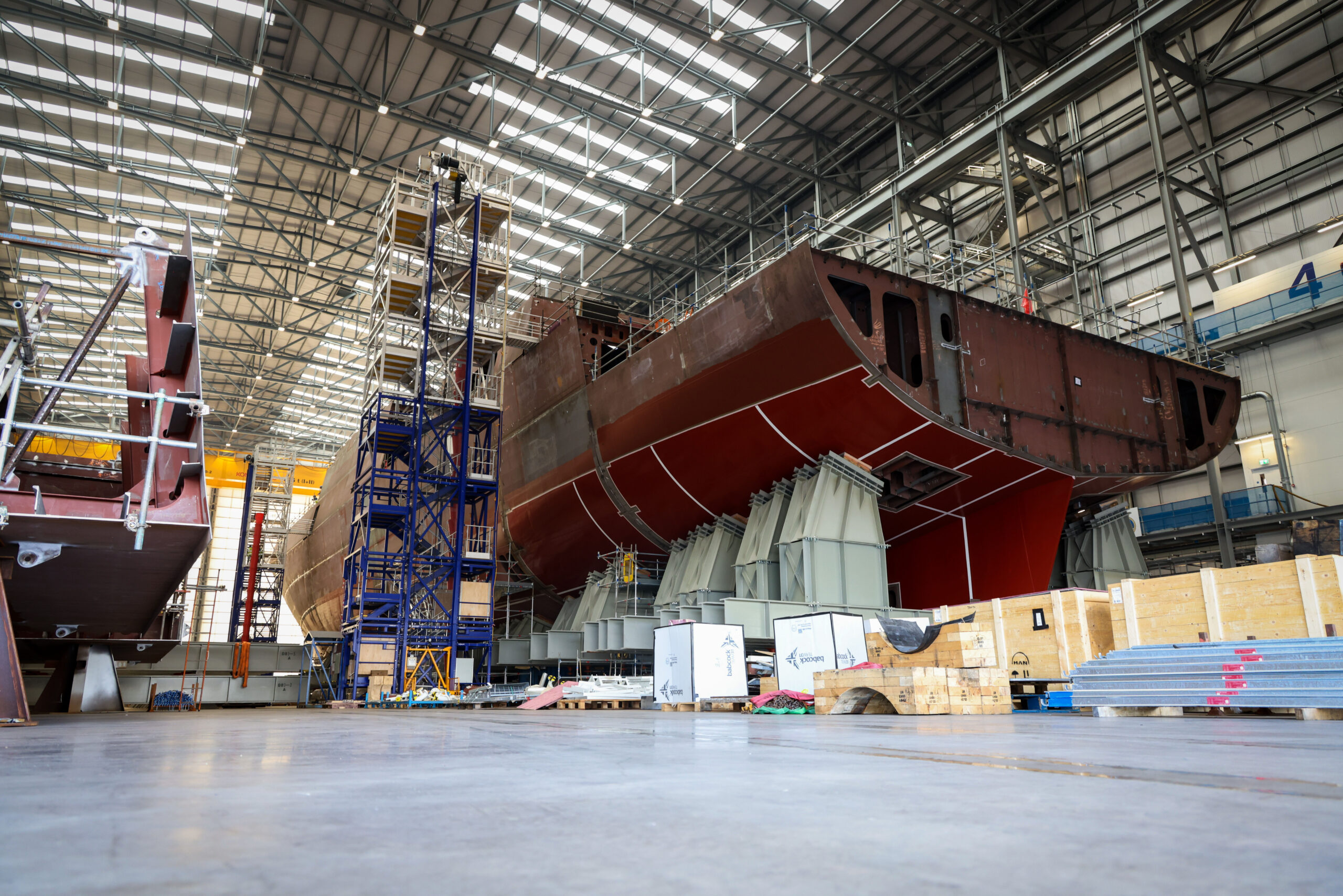
Despite the very real progress that has been achieved in the face of the COVID-19 pandemic, implementation of Type 31 construction has not been without its complications. In April 2023, Babcock announced that macroeconomic changes that had taken place since the contract was first agreed – likely the impact of high inflation – had resulted in an increase in actual and projected costs to deliver the programme as planned. They stated that they had entered a dispute resolution process with the MoD to establish who was responsible for this additional expense. In the event they cannot recover the costs, a loss of between GBP 60M and GBP 100M (EUR 70 M to EUR 115M) would need to be recorded. Babcock’s 2022-23 accounts, released on 20 July 2023, recorded a GBP 100.1 M provision against the Type 31 frigate contract.
Another potential challenge relates to a decision revealed in May 2023 to increase the Type 31’s warfighting potential by equipping the ‘Inspiration’ class with the Mk 41 vertical launch system (VLS). The basic Arrowhead 140 design is already configured to accept this weapon, but it is not yet known whether the work will be undertaken during build or at some later stage of the class’s life. Answering a question asked by ESD via Babcock in June 2023, the MoD said, “Working closely with the US Department of Defence and US Navy, the UK Ministry of Defence have commenced an assessment phase to explore the options, installation opportunities, and costs associated with fitting T31 with Mk 41. At this time, it is too early to speculate on the timing of fitting this capability.”
Export Success
As previously mentioned, a key driver of the initial Type 31 programme was to increase the exportability of British warship designs. Recognising the highly competitive nature of the global frigate market, Babcock sought to market Arrowhead 140 as a warship that could be readily customised to meet a wide range of national requirements whilst doing so in an affordable way. One of Babcock’s leading advantages in developing this proposition was the extensive experience that it had already gained in providing maintenance and other support services throughout the world. This has enabled it to position Arrowhead 140 to deliver value for money not only in terms of initial capacity/cost considerations but also in subsequent through-life support.
This can extend to the wholesale revitalisation or, even, creation of an indigenous shipbuilding sector. In September 2021, Babcock took the opportunity presented by DSEI 2021 to launch its Arrowyard product in support of this approach. Arrowyard brings together transfer of knowledge and technology options to enable the construction, final assembly and outfitting of Arrowhead 140 frigates, whilst supporting implementation of a sovereign in-service support capability.
It also seems likely that having the RN as Arrowhead 140’s lead customer has proved to be another important advantage in export campaigns. This factor has been conspicuously absent from many other recent British warships that have been designed for export, robbing them of association with one of the world’s most respected navies. To give just one example of the new approach, all Arrowhead 140 customers are able to join a RN-chaired Babcock AH140 user group. Here they can assimilate lessons learned during the design, build and acceptance stages, participate in concept of operations development and – eventually – share ‘real world’ operational experience. In any event, Arrowhead 140 looks set to be one of the most important British naval exports of recent times, already gaining two early sales successes.
Indonesia: Arrowhead 140 achieved its first export sale in September 2021 when Babcock signed a design licence contract with Indonesia’s state-owned shipbuilder, PT PAL. The Indonesian Navy’s requirement encompasses two frigates and is known locally as the ‘Merah Putih’ (‘Red White’) programme, after the colours of Indonesia’s national flag. Babcock’s responsibilities under this programme are to provide a comprehensive package of baseline Arrowhead 140 design materials, undertake technical liaison with counterparts in PT PAL during the build process, and provide whatever additional engineering support may be required. PT PAL meanwhile, as lead contractor for the programme with the Indonesian MoD, has responsibility for adapting the design to meet the Indonesian Navy’s requirements, and will construct the frigates at their shipyard in Surabaya.
Physical implementation of Indonesia’s Arrowhead 140-based construction began with a first steel cutting ceremony for the lead ship at Surabaya on 9 December 2022. The programme’s delivery schedule has been determined between PT PAL and the Indonesian MoD. It is believed to involve delivery of this lead unit around the end of 2026. The equipment fit determined by the Indonesian Navy is reportedly optimised for the air defence role and, consequently, is different from that adopted by their RN ‘half-sisters’. Another significant variation is the selection of Turkish company Havelsan’s ‘Advent’ CMS to provide the Indonesian frigates’ command and control (C2) functions.
Poland: Arrowhead 140’s second export success was announced in March 2022 when Babcock was selected as the platform design provider and technology partner for Poland’s ‘Miecznik’ (‘Swordfish’) frigate programme. Arrowhead 140 had previously been one of three designs initially shortlisted for the Polish requirement alongside German tkMS MEKO A-300 and Spanish Navantia F-100 based proposals. The British and German designs had subsequently been down-selected for detailed consideration, with Babcock’s offer winning out in this final phase.

Babcock has subsequently been awarded a number of contracts related to class design and transfer of technology activities pending conclusion of a design licence agreement that, as of mid-2023, was close to being finalised. This envisages the construction of three frigates based on the Arrowhead 140 design by the PGZ-MIECZNIK Consortium for delivery towards the end of the decade onwards. On 17 June 2023, an event was held at the PGZ Naval Shipyard in Gdynia to mark the start of work on construction of a ship hall and other facilities that will support the Polish ships’ build. It is currently planned that a ceremony will take place at Gdynia on 16 August 2023 to mark the first steel-cutting for the lead ship.
Details that have emerged of the Miecznik frigate’s configuration suggest a number of similarities with their British Type 31 counterparts. Notably, they will likely also incorporate a Thales Tacticos CMS and be equipped with the MBDA Common Anti-Air Modular Missile (CAMM) that forms the core of Sea Ceptor. However, the Polish ships will be outfitted as ‘high end’ general purpose frigates. Poland’s specification of additional anti-surface and anti-submarine weaponry supported by suitably advanced sensors demonstrates the ease with which the baseline design can be flexed to accommodate various user requirements.
In addition to these initial contracts, Arrowhead 140 has formed the basis of a number of proposals to other countries incorporating construction options ranging from licensed build to full assembly at Rosyth. These include ultimately unsuccessful discussions to meet the Hellenic Navy’s recapitalisation requirements. It has also been reported that the supply of an Arrowhead 140-based frigate to Ukraine was considered within the broad ranging Ukrainian Naval Capabilities Enhancement Programme (UNCEP) signed in June 2021, before the current war with Russia disrupted the country’s naval modernisation plans.
Speaking to ESD in July 2023, Babcock stressed that the location of Arrowhead 140 construction for any future programmes would be entirely based on customer preference. They stated that, “Babcock’s offer allows customers to take advantage of our Arrowyard concept and decide upon a range of services from the provision of export design licenses, through the additional provision of product design and build support services where the customer seeks to build the ships, or parts of their ships, in their own shipyards. Delivery of the entire programme of full design and build services at our Rosyth shipyard facilities in Scotland is also an option.”
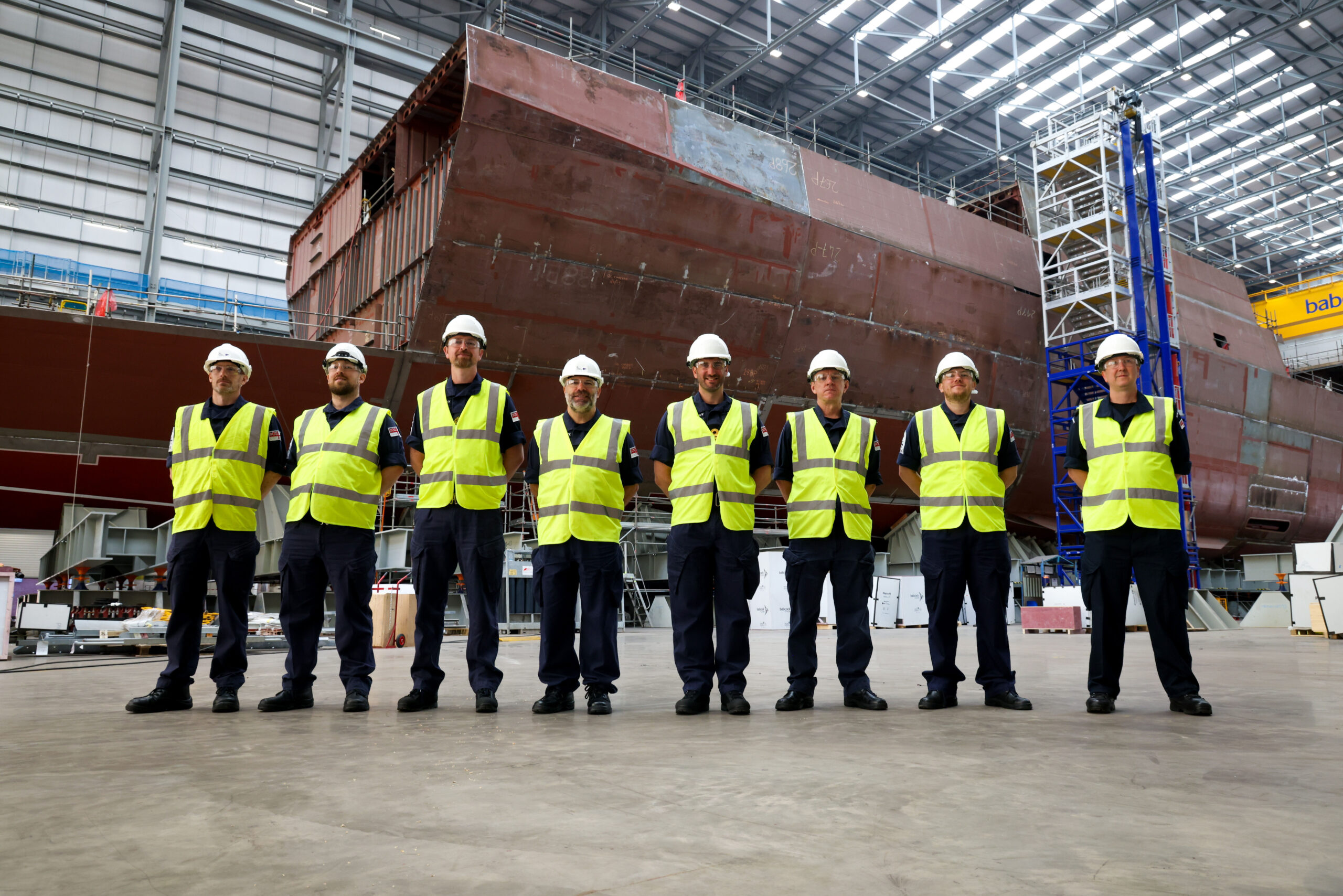
The Way Ahead
The British RN’s Arrowhead 140-based Type 31 frigate programme has clearly made considerable progress since Babcock Team 31 was selected as the project’s preferred bidder some four years ago. Despite the significant disruption caused by the COVID-19 pandemic, construction to date has progressed largely in line with a timetable that was always considered aggressive compared with other British warship procurement. Moreover, Babcock’s early achievement of overseas sales of the Arrowhead 140 design suggests that the focus on exportability engendered by the NSS has already started to achieve tangible results.
It has not all been plain sailing. The current dispute over the impact of unexpectedly high inflation on Type 31 programme costs is certainly an unwelcome distraction for a project that has otherwise served as something of a ‘poster boy’ for British shipbuilding’s revitalisation. It should also be noted that Type 31 construction has yet to progress to the most complex, outfitting stage. This suggests that challenges to timely project delivery remain. In this regard, it is worth noting that the licensed-construction projects are at an even earlier stage in their implementation.
Nevertheless, both the RN Type 31 programme and Babcock’s Arrowhead 140-based export sales are currently meeting the expectations set for them. Moreover, Babcock continues to leverage the adaptability of the Arrowhead 140 hull-form to incorporate a range of customer capability choices for ongoing export campaigns, as well as the requirements of the proposed British Type 32 frigate programme. The group’s concept design team continue to develop other concepts and innovations in response to rapid technological advances and evolving customer expectations. Most importantly, Arrowhead 140 has proved the ability of its mix of capacity, flexibility and cost-effectiveness to disrupt the global shipbuilding market. In doing this, it is helping put the British naval sector back on the map.
| Programme | Country | No. of Ships | Shipyard |
| Type 31 Frigate | UK | 5 | Babcock, Rosyth, UK |
| Merah Putih | Indonesia | 2 | PT PAL, Surabaya, Indonesia |
| Miecznik | Poland | 3 | PGZ Naval Shipyard, Gdynia, Poland |
Conrad Waters




![‘Firsts’ class: RN’s new autonomous experimentation vessel brings new achievements in uncrewed concepts and capabilities The UK Royal Navy’s (RN’s) experimental vessel (XV) Patrick Blackett is pictured conducting trials with an ‘APAC24’ uncrewed seaboat off Portsmouth, UK in November 2024. Patrick Blackett is the RN’s testbed vessel for accelerating delivery of autonomous concepts and capabilities to frontline operators. [Crown copyright 2024]](https://euro-sd.com/wp-content/uploads/2025/05/1-ESD-XVPB-CC-MoD-24-Kopie-218x150.jpg)



